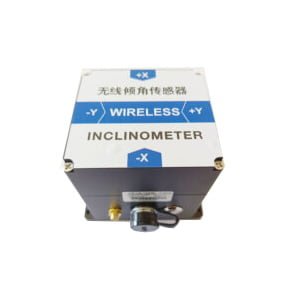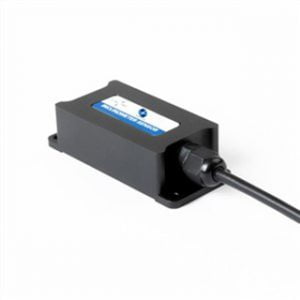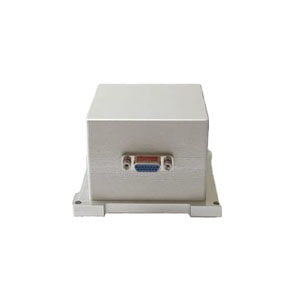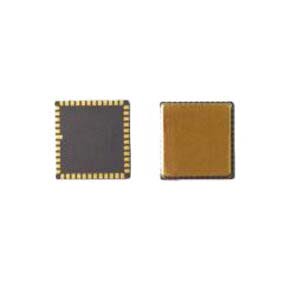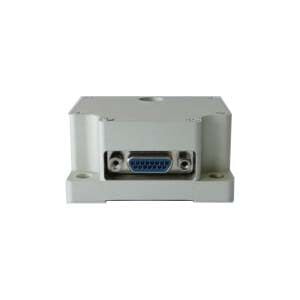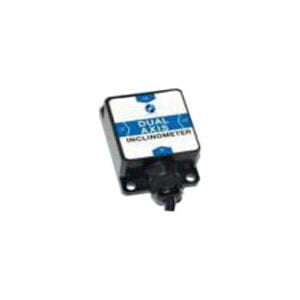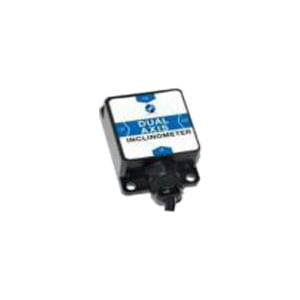Digital Output Type Dual-Axis Tilt Sensor
Introduction
ER-TS-4256DI is a new generation of digital small volume MEMS tilt sensor with built-in dual channel earth gravity tilt unit, which can be converted into inclination change by measuring static gravity acceleration. Thus the tilt and pitch angle of the sensor output relative to the horizontal plane can be measured. The output mode of RS232, RS485 or TTL and MODBUS level interface standard are optional. Due to the built-in MCU control system, the output linearity of the sensor can be modified twice, which makes up for the accuracy decline caused by insufficient correction in the analog model.
The product uses non-contact measurement of the original quantity, and can output the current attitude inclination in real time. Simple to use, no need to retrieve the two surfaces of the phase change installation. In addition, it has strong resistance to external electromagnetic interference and can adapt to long-term work in harsh industrial environments, which is an ideal choice for industrial automation control and platform attitude measurement.
Features
Biaxial tilt monitoring
Full range accuracy 0.1°, resolution 0.01°
Output frequency 5~100HZ optional
Input voltage DC 5V (9~36 customizable)
Wide temperature working -40~+85℃
Low range 0~90° (optional)
High vibration resistance>3500 g
The baud rate is adjustable from 2400~115200
IP67 protection level
Output RS232/RS485/TTL/MODBUS (optional)
Small volume (55*37*24mm) (customizable)
Applications
High voltage power line tower pole monitoring
Satellite solar antenna positioning
Aerial work vehicle
Mining machinery, oil logging equipment
Medical equipment
Hydraulic lifting platform
Tilt based monitoring
Various construction machinery angle control
Inspection of bridges and dams
Specifications
| Parameter | Condition | ER-TS-4256DI-10 | ER-TS-4256DI-30 | ER-TS-4256DI-60 | ER-TS-4256DI-90 | Unit |
| Measuring range | / | ±10 | ±30 | ±60 | ±90 | ° |
| Measurement of shaft | / | X, Y Axis | X, Y Axis | X, Y Axis | X, Y Axis | / |
| Zero temperature drift | -40~85° | ±0.01 | ±0.01 | ±0.01 | ±0.01 | °/℃ |
| Sensitivity temperature coefficient | -40~85° | ≤150 | ≤150 | ≤150 | ≤150 | ppm/℃ |
| Frequency response | DC response | 100 | 100 | 100 | 100 | Hz |
| The resolution of the | Bandwidth 5Hz | 0.01 | 0.01 | 0.01 | 0.01 | ° |
| Precision | -40~85℃ | 0.1 | 0.1 | 0.1 | 0.1 | ° |
| Long-term stability | -40~85℃ | <0.12 | ° | |||
| Power on start time | / | 0.2 | 0.2 | 0.2 | 0.2 | s |
| The response time | / | 0.01 | 0.01 | 0.01 | 0.01 | s |
| Rate | 5Hz output, 15Hz, 35Hz, 50Hz and 100HZ can set (RS485 does not have this function) | |||||
| The output signal | RS232 / RS485 / RS422 / TTL/PWM/CAN/MODBUS CAN order | |||||
| Average working time | ≥55,000 hours/time | |||||
| Impact resistant | 3500 g, 0.5 ms, 3 times/shaft | |||||
| Shock resistant | 10grms, 10~1000Hz | |||||
| Insulation resistance | ≥100 mΩ | |||||
| Waterproof level | IP67 | |||||
| Cable | Standard 1.5 m length, wear resistance, oil proof, wide temperature, shielding cable 4*0.2mm² | |||||
| Weight | 75g (excluding boxes) | |||||
Application Techniques
1.The Difference between Tilt Sensor and Gyro Sensor
3.How to install the tilt sensor?
4.What are Tilt Switches and Tilt Sensors?
5.How to Use the Tilt Sensor and How to Install It?
6.Do you Know the Working Principle of Inclinometer ?
More Products
